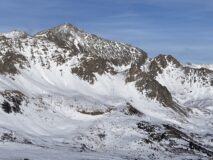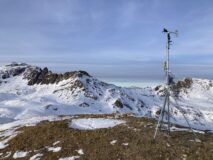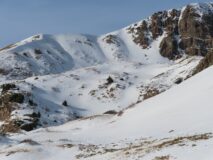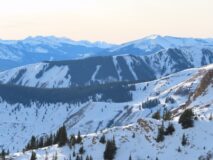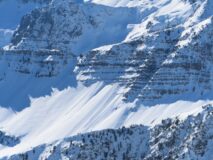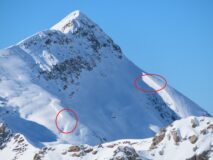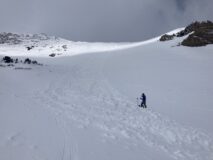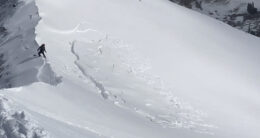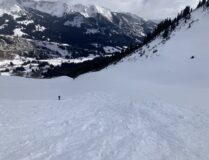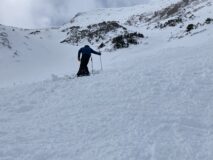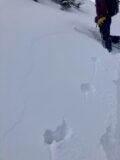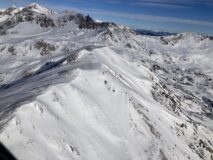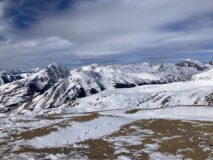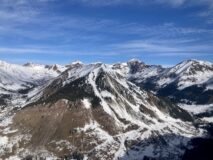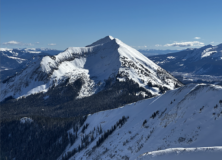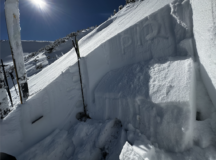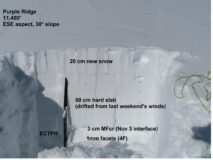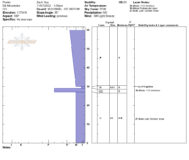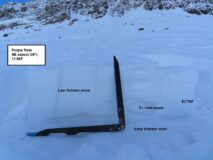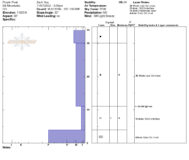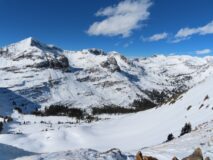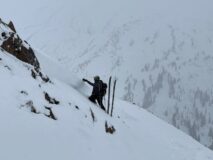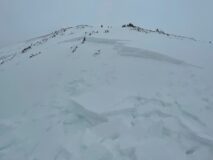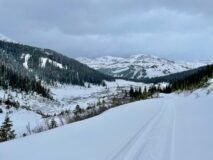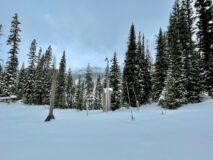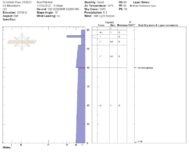Date of Observation: 11/22/2022
Name: Zach Guy and Evan Ross
Zone: Southeast Mountains
Route Description: Skinned out to Carbonate Hill via Pearl Pass Road and returned the same route.
Observed avalanche activity: Yes
Avalanches: A small wet loose avalanche off of the SW side of Star Peak, probably ran yesterday.
Weather: Mild temps, some high thin clouds at times. Light winds
Snowpack: Observed one alarmingly loud collapse on a cross-drifted terrain feature on Carbonate Hill, on a SW aspect ATL. The slab was thin but hard. The loading pattern from last week’s winds appears to have blown snow off of all aspects near ridgeline start zones and deposited into concave catchments lower on slopes. Surfaces are wind-affected, hard, and variable above treeline, often with weak facets below hard wind crusts. Below treeline the snowpack is 8″ or less of cohesionless facets, ~2mm. Let’s just say the ski quality out there is sub-par.
- A small wet loose avalanche on Star caused by recent solar warming.
- This slope produced a loud collapses when I crossed it. SW aspect.
- Wind and temperature data for the Southeast Mountains! We’re working on getting the data on our website soon.
- Wind effected and hard snow surfaces. SE terrain on Pearl Mountain.
- Snow coverage looking back towards the Union Chutes. Generally E to NE facing terrain.
- Westerly facing terrain on Carbonate Hill.
- Northerly facing terrain.
- Don’t worry folks. He’s a professional.




